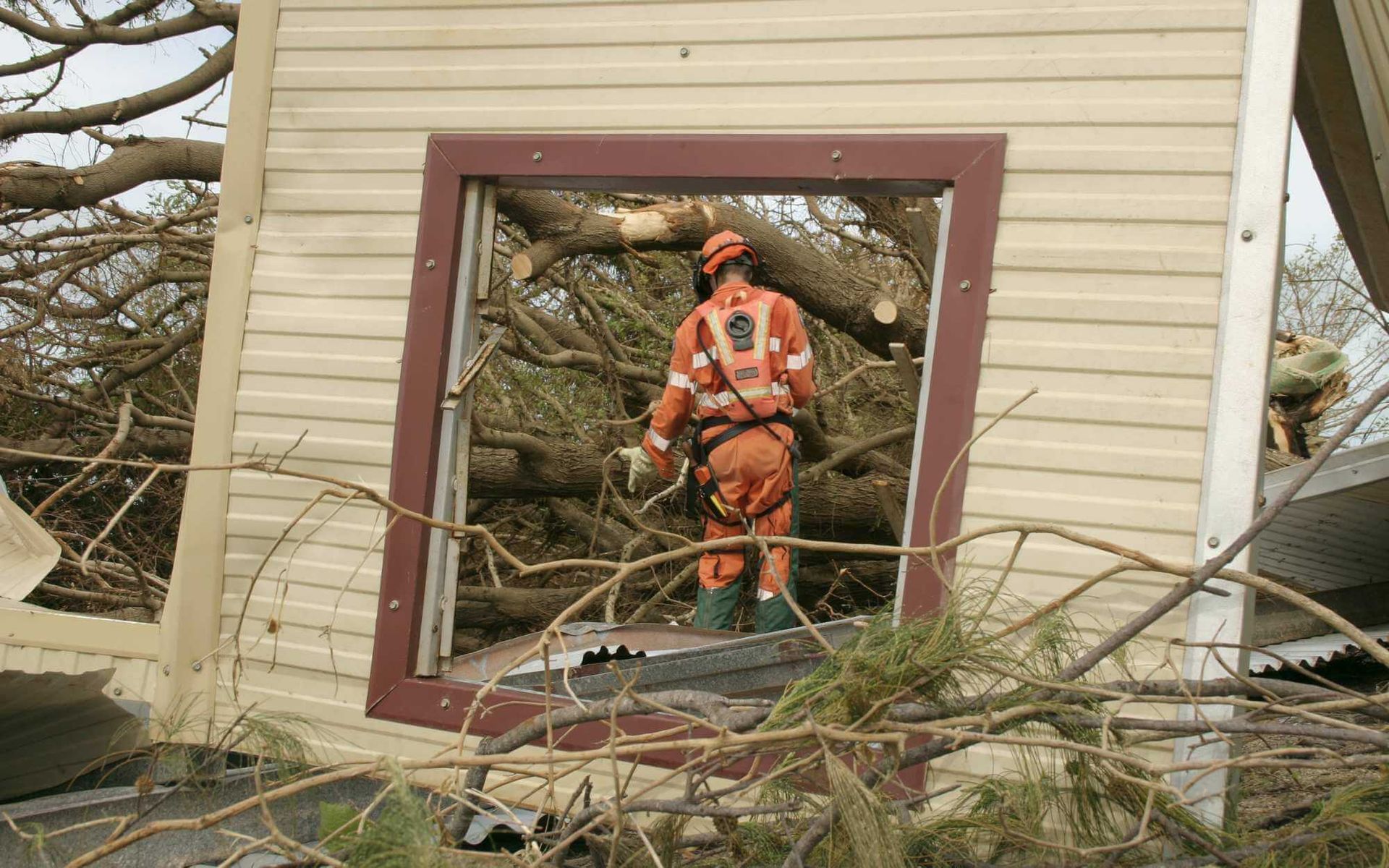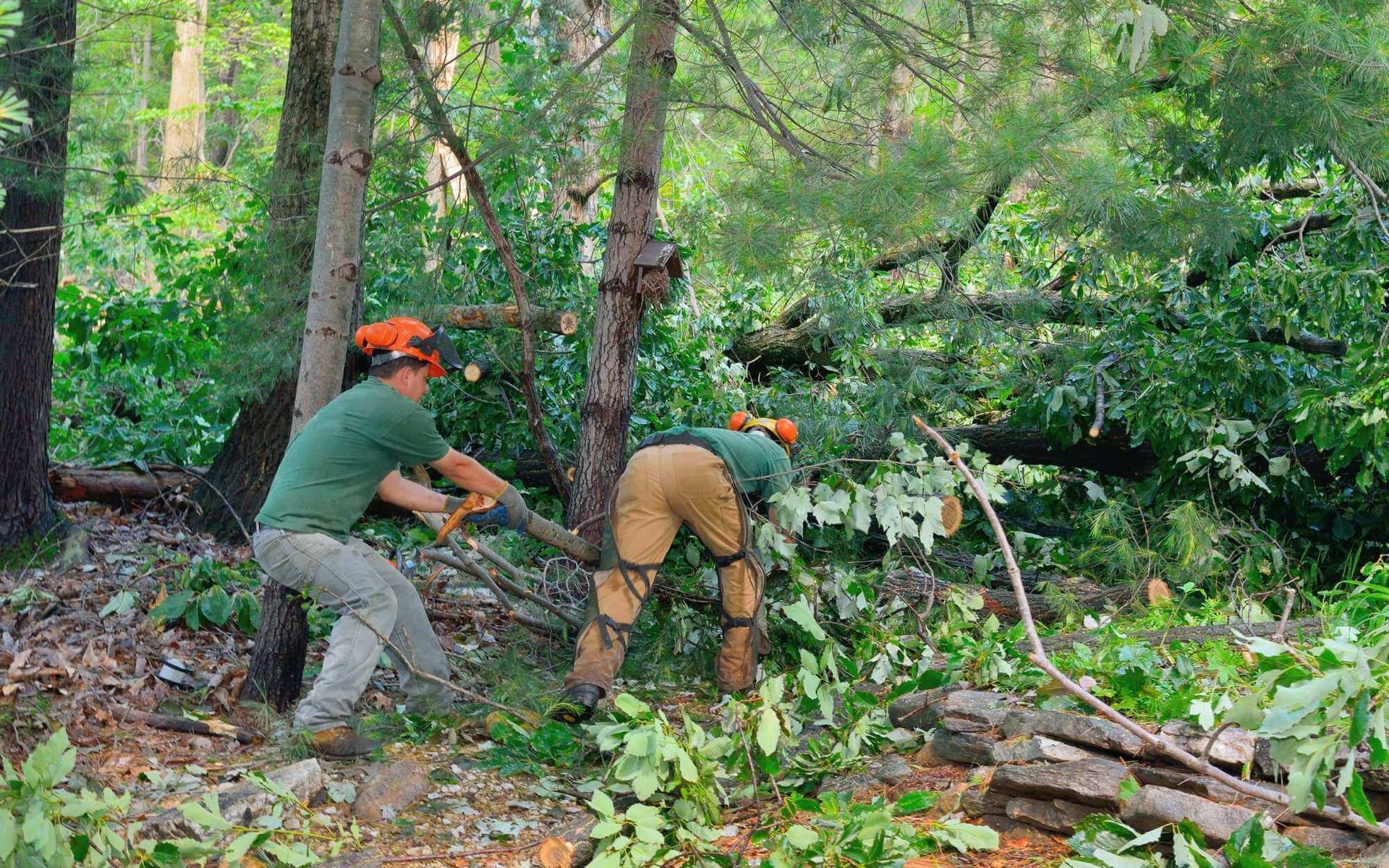How to Do Fast and Efficient Post-Storm Tree Cleanup
PUBLISHED ON
SHARE THIS ARTICLE

The aftermath of a storm often brings an unexpected guest - a messy yard filled with fallen branches, leaves, and sometimes even entire trees. Neglecting post-storm tree cleanup can be detrimental to your property's aesthetics, safety, and the health of your remaining trees.
In this tree debris removal guide, we'll emphasize the importance of fast and efficient post-storm tree cleanup and offer a guide to help you tackle this task with ease.
From identifying risks and assessing damage to employing the correct removal methods, we'll walk you through the process to ensure your outdoor space is back to its pristine condition in no time.
Assessing the Damage
In the wake of a storm, inspect your yard meticulously, looking for fallen trees and scattered branches. Evaluate the damage, taking note of unstable trees that may pose a potential hazard.
Be vigilant about broken branches precariously hanging overhead. Check for damage to downed power lines or surrounding structures, and importantly, keep a safe distance.
If a tree has struck utility lines or looks likely to fall, contact professionals immediately. Your safety is paramount in these situations, even when restoring your property's aesthetics.
Safety Precautions

Before embarking on the removal process, ensure you're equipped with proper safety gear. This should include sturdy gloves, safety glasses, heavy-duty boots, and a hard hat. Long-sleeved shirts and pants can protect against cuts and scrapes.
Work cautiously, avoiding overexertion or working in dangerous conditions. If you're using power tools like chainsaws, follow the manufacturer's instructions strictly.
Remember, no amount of cleanup is worth risking personal injury. If the job seems too large or dangerous, it's best to contact professionals.
Equipment and Tools
Choosing the right tools and protective gear is pivotal for efficient post-storm cleanup. For falling branches and tree limbs, a rake or broom suffices, while a chainsaw or handsaw is needed for larger debris.
Ensure your tools are in good condition; dull blades make tasks more laborious and pose safety risks. Regularly inspect, clean, and sharpen your tools to maintain their effectiveness.
Always adhere to the manufacturer's guidelines for the maintenance and storage of equipment to enhance their lifespan and performance.
Proper Techniques
When dealing with storm-damaged trees, proper cutting and pruning techniques are critical.
Use a handsaw or chainsaw, making cuts at the branch collar to facilitate tree healing. For larger limbs, use the three-cut method - two cuts on the branch, and one final cut on the trunk. Always cut fallen trees into manageable sections.
Safety is paramount when handling larger trees. If a tree is too big or tangled in power lines, it's crucial to consider professional assistance to avoid unnecessary risks.
Debris Disposal

After cleanup, categorize debris into piles of leaves, branches, and larger logs.
Leaves make great compost material; collect them in compostable bags for future gardening needs. Dead branches can be chipped for mulch or turned into firewood. Larger logs may be sold or donated for lumber.
For remaining scattered debris, check local waste management policies. Some areas provide special pickup for yard waste or designated sites for disposal. Always recycle responsibly to minimize environmental impact.
Restoring the Landscape
Post-storm, consider replanting resilient tree species suitable for your region’s climate.
Regularly trim trees, ensuring they grow strong, healthy, and resistant to storm damage. Strategically position new plantings away from structures to minimize potential storm damage. Incorporate windbreak designs such as hedges or tree rows to disrupt wind flow.
Regular tree maintenance and thoughtful landscaping are crucial in creating storm-resistant yards and gardens.
Professional Cleanup
While these efficient tree cleanup tips can help you restore your property's beauty and safety, some situations are best left to the experts.
A professional tree removal service has the necessary training, equipment, and expertise to remove trees safely and efficiently and prevent further damage. They also have specialized insurance coverage in case of any damages or injuries during the cleanup process.
Mastering the Art of Post-Storm Tree Cleanup, Every Second Counts
Storm damage tree cleanup involves assessing damage, taking safety precautions, using proper equipment, employing correct cutting techniques, and responsibly disposing of debris. Regular maintenance and thoughtful landscaping can reduce future storm damage.
Removing downed trees or falling trees entangled in power lines or those too large to handle can be risky. So, it's best to rely on safe tree removal services as they possess the necessary expertise and equipment, to ensure safety and efficiency during cleanup.
Call us if you need assistance with
post-storm tree cleanup. We're happy to help restore your outdoor space to its former glory.
Want a free quote or some friendly advice? Call our team today:






